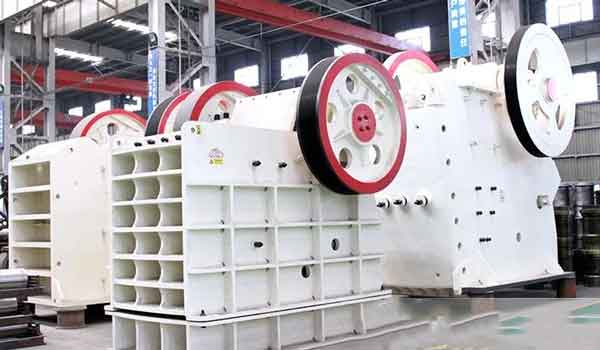The main working part of the hammer crusher is the rotor with a hammerhead (also called a hammer), and the rotor consists of the main shaft, a disc, a shaft pin, and a hammerhead. This article analyzes hammer crushing from the characteristics and selection principles of 5 types of hammer crushing.

The types of hammer crushers can be divided into the following types according to their structural characteristics.
1. According to the number of rotors: it is divided into single rotor (single shaft type) and double rotor (double shaft type).
2. According the rotation direction of the rotor: it is divided into two types: irreversible and reversible (the rotor can rotate in two directions).
3. According to the arrangement of the hammers on the rotor: single-row type (the hammerhead is installed on the same rotation plane) and multi-row type (the hammerhead is distributed on several rotation planes).
4. According to the connection method of the hammer on the rotor: it is divided into two types: fixed hammer type and movable hammer type. The fixed type is mainly used for fine crushing and grinding of soft materials.

Introduction and characteristic analysis of 5 types of commonly used hammer crushers
1. Single rotor hammer crusher
Single rotor hammer crushers are divided into two types: reversible and irreversible. The reversible rotor first rotates in a certain direction to crush the material. After the lining plate, sieve plate, and the end of the hammerhead in this direction are worn to a certain extent, the rotor is rotated in the opposite direction, and the other end of the hammerhead and the other end of the hammerhead are used. The lining plate and sieve plate work, so that their continuous working life can be almost doubled.
The irreversible rotor can only rotate in one direction. When the end of the hammer is worn to a certain extent, it is necessary to stop and change the direction of the hammerhead (turn 180°) or replace it with a new one.
2. Double rotor hammer crusher
Two rotors are installed in parallel in the casing of this type of crusher, and the rotors are composed of an arm-shaped hanging hammer body and a hammer hinged on it. The hammerheads are arranged in multiple rows, and the adjacent hanging hammer bodies cross each other in a cross shape. The two rotors are driven by separate motors to rotate in opposite directions.
The feeding port of the double-rotor hammer crusher is located in the upper center of the casing, and below the feeding port, there is an arched grate basket (composed of a set of parallel arched grate bars) between the two rotors. Each row of hammerheads can freely pass through the gap between the grate bars. Since the double-rotor hammer is divided into several crushing areas, and there are two rotors with multiple rows of hammers, the crushing ratio is large, up to about 40, and the production capacity is equivalent to two single-rotor hammer crushers of the same specification.

3. Heavy Hammer Crusher
In terms of working principle and structural structure, heavy hammer crushing is the same as ordinary hammer crushing, the difference is that the output of heavy hammer crushing is relatively large, because the hammerhead in the body is relatively heavy, generally higher than 20kg, so the impact of stone The crushing force is larger, and the materials that can be crushed per unit time are significantly improved compared with ordinary hammer crushing.
Although the heavy hammer has a large amount of bankruptcy, it is also not suitable for directly crushing ores with high hardness such as river pebble, basalt, granite, etc., to avoid serious wear of the hammerhead and increase the cost.
4. Hammer crusher for crushing sticky and wet materials
This type of hammer crusher is equipped with a rotor inside, and the front of the rotor is equipped with a crawler-type slewing plate used as a crushing plate. This kind of impact plate can prevent the material from accumulating at the entrance of the crushing chamber, and the material adhered to the impact plate is swept away by the hammer. The impact plate is driven by a separate motor through the rotating shaft, and there is a backing plate at the bottom to withstand the impact force of the hammer.
There is a cleaning device behind the rotor, which is a vertical closed chain with a transverse scraper. The chain belt is driven by a separate motor, which can discharge the crushed materials accumulated behind the rotor, and at the same time scrape off the materials adhering to the shell wall.

4 aspects of hammer crusher selection principles
1. Choose according to the nature of the material. After understanding the properties of the materials that need to be crushed, you can choose according to the performance of different types of hammer crushers.
2. Choose according to production capacity. Through scientific and reasonable calculation methods, master the comprehensive production capacity to determine the required specifications and parameters of hammer crushing. Generally, the production capacity should be slightly larger than the actual production capacity when selecting to ensure that the continuous production supply of materials will not be affected.
3. Select according to the matching power. Understand the motor power of the crusher and choose the right one.
4. Choose according to the layout method. There are three ways to discharge materials from the crusher, namely self-weight blanking, negative pressure suction, and mechanical conveying. For single-rotor crushers, due to their small size, self-weight cutting is generally used to simplify the structure. Most medium-sized crushers are equipped with a negative pressure suction device, which can absorb the moisture of the finished product, reduce the humidity of the finished product, facilitate storage, improve the crushing efficiency by 10%-15%, and reduce the dust in the crushing chamber.
Send us a message
We will provide you with the most professional services.

